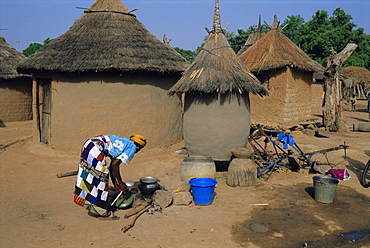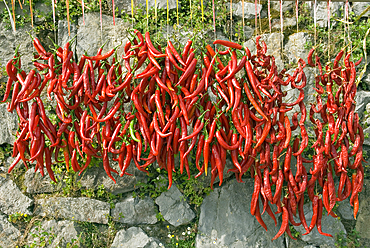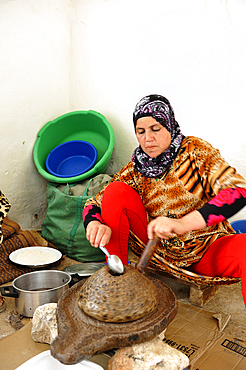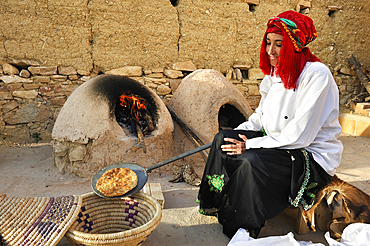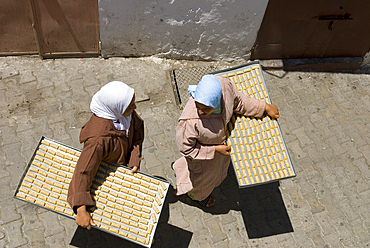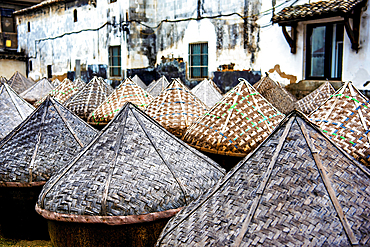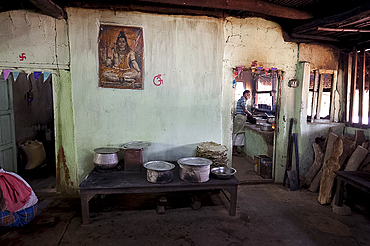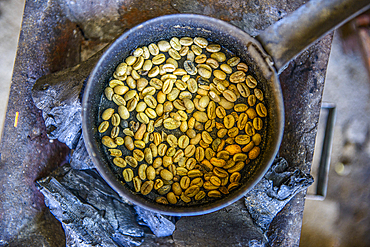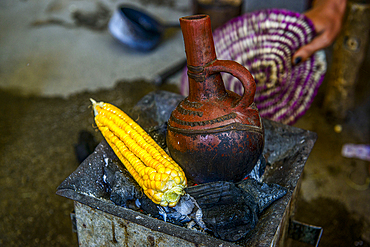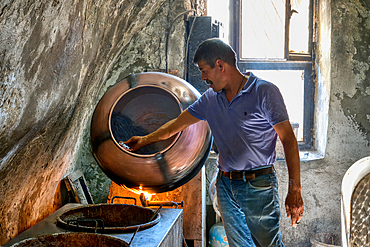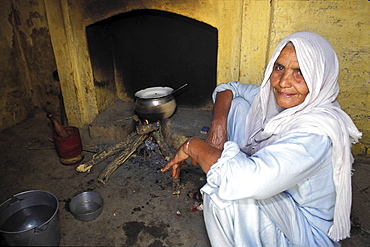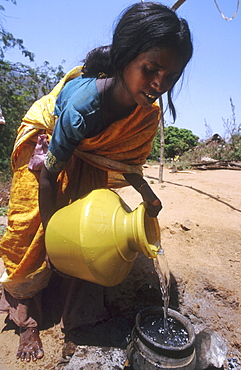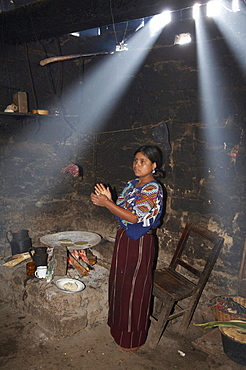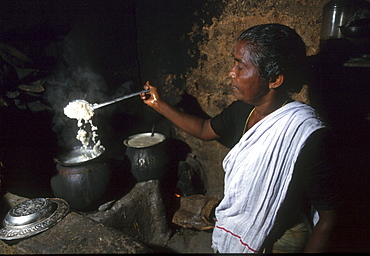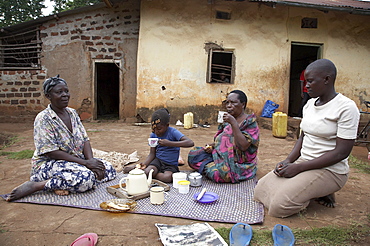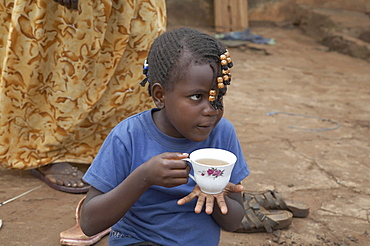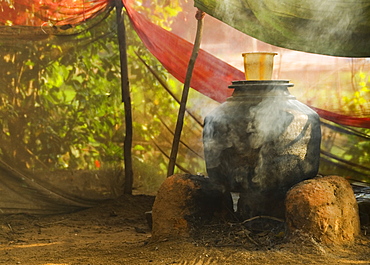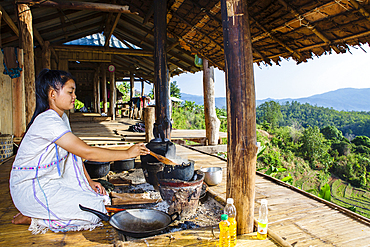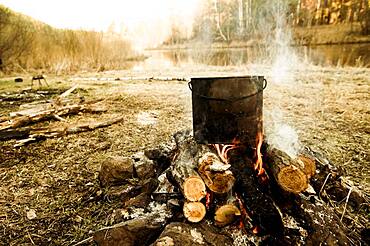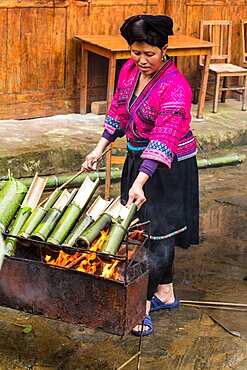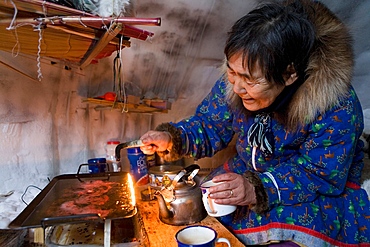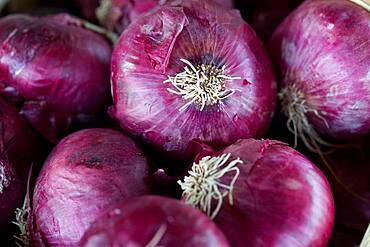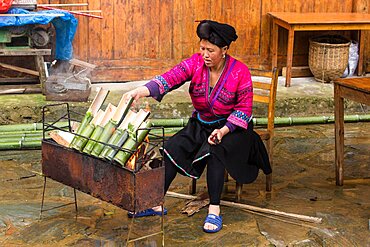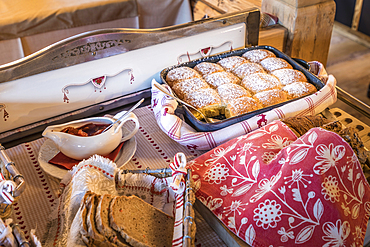Results
21 results found
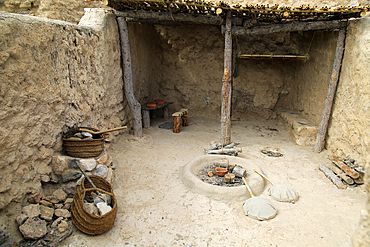
Reconstruction of buildings, Los Millares prehistoric Chalcolithic settlement archaelogical site, Almeria, Andalusia, Spain, Europe
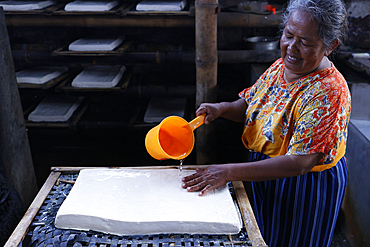
Worker making tofu, a food prepared by coagulating soy milk, in a traditional family factory, Yogyakarta, Java, Indonesia, Southeast Asia, Asia, Asia
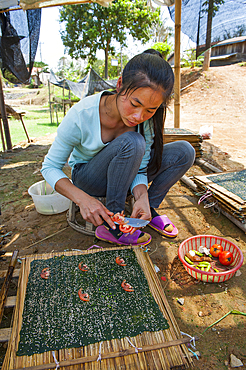
Young woman making Kai Paen, dried river weed sheets sprinkled with sesame seeds, thinly sliced tomatoes and garlic, northern Laos
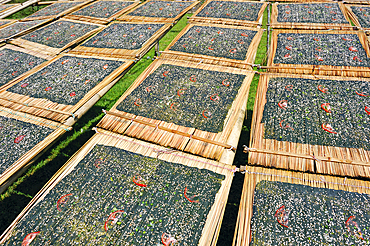
Sun drying of Kai Paen, dried river weed sheets sprinkled with sesame seeds, thinly sliced tomatoes and garlic, northern Laos

Preparation of smoked fish soup, Gaideliai rural tourism homestead on the edge of Srovinatis lake, Ginuciai, Aukstaitija National Park, Lithuania, Europe
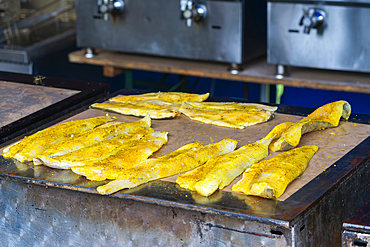
Fish fillets on grill during fish harvest at Rozmberk Pond, UNESCO Biosphere, Trebon, Jindrichuv Hradec District, South Bohemian Region, Czech Republic (Czechia), Europe
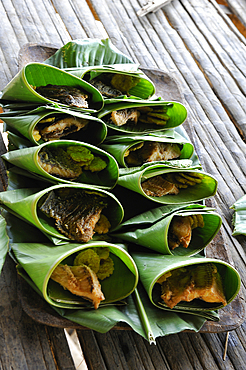
Dishes of fish wrapped in leaves, Embera native community living by the Chagres River within the Chagres National Park, Republic of Panama, Central America
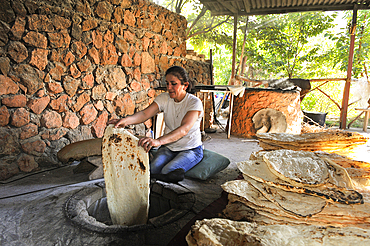
Woman making lavash (thin unleavened flatbread) made in a tandoor, called tonir in Armenian, in a restaurant beside the Noravank Monastery, near Yeghegnadzor, Armenia, Eurasia
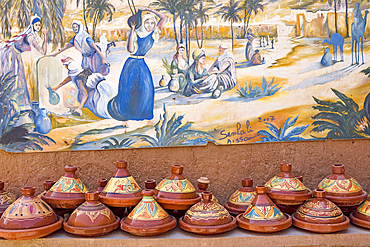
Pottery in the city of Tamegroute, Draa River valley, Province of Zagora, Region Draa-Tafilalet, Morocco
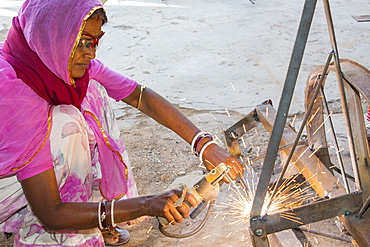
Women welding joints during the construction of solar cookers at the Barefoot College in Tilonia, Rajasthan, India. The Barefoot College is a worldwide charity, founded by Bunker Roy, its aims are, education, drinking water, electrification through solar power, skill development, health, women empowerment and the upliftment of rural people. Solar cookers save women having to walk to the froest to cut down wood for cooking, thus saving the forests, and a daily chore for woman.
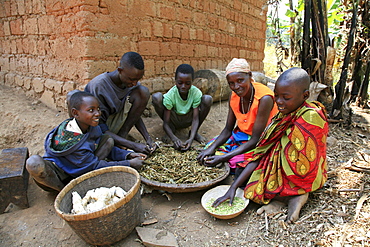
Burundi nduwamahoro, active non,violence peace building project, supported by sciaf. In the home of grandmother ntezahorigwa pelagie, 60. The family preparing food: taking beans from their pods, cleaning peas and peeling cassava, their staple diet.
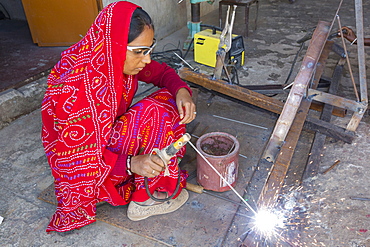
Women welding joints during the construction of solar cookers at the Barefoot College in Tilonia, Rajasthan, India. The Barefoot College is a worldwide charity, founded by Bunker Roy, its aims are, education, drinking water, electrification through solar power, skill development, health, women empowerment and the upliftment of rural people. Solar cookers save women having to walk to the froest to cut down wood for cooking, thus saving the forests, and a daily chore for woman.
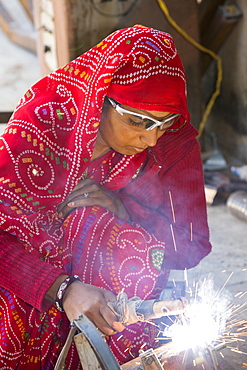
Women welding joints during the construction of solar cookers at the Barefoot College in Tilonia, Rajasthan, India. The Barefoot College is a worldwide charity, founded by Bunker Roy, its aims are, education, drinking water, electrification through solar power, skill development, health, women empowerment and the upliftment of rural people. Solar cookers save women having to walk to the froest to cut down wood for cooking, thus saving the forests, and a daily chore for woman.
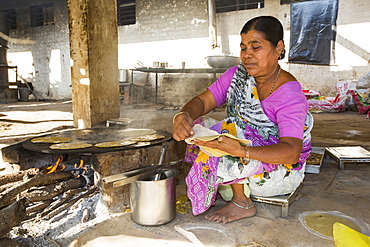
The Muni Seva Ashram in Goraj, near Vadodara, India, is a tranquil haven of humanitarian care. The Ashram is hugely sustainable, next year it will be completely carbon neutral. Its first solar panels were installed in 1984, long before climate change was on anyones agenda. Their energy is provided from solar panels, and wood grown on the estate. Waste food and animal manure is turned inot biogas to run the estates cars and also used for cooking. Solar cookers are also used, and the air conditioning for the hospital is solar run. 70 % of the food used is grown on the estate. They provide an orphanage, schools for all ages, vocational training, care for the elderly, a specialist cancer hospital withstate of the art machinary, and even have a solar crematorium. This shot shows a cook preparing chapatis on a biofuel stove.
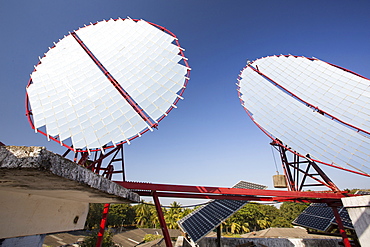
The Muni Seva Ashram in Goraj, near Vadodara, India, is a tranquil haven of humanitarian care. The Ashram is hugely sustainable, next year it will be completely carbon neutral. Its first solar panels were installed in 1984, long before climate change was on anyones agenda. Their energy is provided from solar panels, and wood grown on the estate. Waste food and animal manure is turned inot biogas to run the estates cars and also used for cooking. Solar cookers are also used, and the air conditioning for the hospital is solar run. 70 % of the food used is grown on the estate. They provide an orphanage, schools for all ages, vocational training, care for the elderly, a specialist cancer hospital withstate of the art machinary, and even have a solar crematorium. This shot shows solar panels that focus the suns rays on heat exchangers to boil oil, which is then sent down to the kitchens below to heat the cookers.
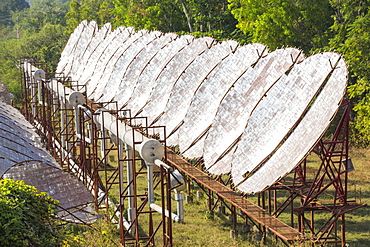
The Muni Seva Ashram in Goraj, near Vadodara, India, is a tranquil haven of humanitarian care. The Ashram is hugely sustainable, next year it will be completely carbon neutral. Its first solar panels were installed in 1984, long before climate change was on anyones agenda. Their energy is provided from solar panels, and wood grown on the estate. Waste food and animal manure is turned inot biogas to run the estates cars and also used for cooking. Solar cookers are also used, and the air conditioning for the hospital is solar run. 70 % of the food used is grown on the estate. They provide an orphanage, schools for all ages, vocational training, care for the elderly, a specialist cancer hospital withstate of the art machinary, and even have a solar crematorium. This shot shows the solar air conditioning for the Ashram's hospital.
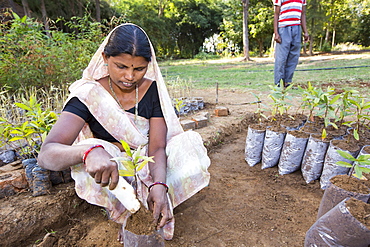
The Muni Seva Ashram in Goraj, near Vadodara, India, is a tranquil haven of humanitarian care. The Ashram is hugely sustainable, next year it will be completely carbon neutral. Its first solar panels were installed in 1984, long before climate change was on anyones agenda. Their energy is provided from solar panels, and wood grown on the estate. Waste food and animal manure is turned inot biogas to run the estates cars and also used for cooking. Solar cookers are also used, and the air conditioning for the hospital is solar run. 70 % of the food used is grown on the estate. They provide an orphanage, schools for all ages, vocational training, care for the elderly, a specialist cancer hospital withstate of the art machinary, and even have a solar crematorium. This shot shows a woman planting trees for onward growth in the Ashrams forests.

The Muni Seva Ashram in Goraj, near Vadodara, India, is a tranquil haven of humanitarian care. The Ashram is hugely sustainable, next year it will be completely carbon neutral. Its first solar panels were installed in 1984, long before climate change was on anyones agenda. Their energy is provided from solar panels, and wood grown on the estate. Waste food and animal manure is turned inot biogas to run the estates cars and also used for cooking. Solar cookers are also used, and the air conditioning for the hospital is solar run. 70 % of the food used is grown on the estate. They provide an orphanage, schools for all ages, vocational training, care for the elderly, a specialist cancer hospital withstate of the art machinary, and even have a solar crematorium. This shot shows the girls school.

Burundi nduwamahoro, active non,violence peace building project, supported by sciaf. In the home of grandmother ntezahorigwa pelagie, 60. The family preparing food: taking beans from their pods, cleaning peas and peeling cassava, their staple diet.

Burundi nduwamahoro, active non,violence peace building project, supported by sciaf. In the home of grandmother ntezahorigwa pelagie, 60. The family preparing food: taking beans from their pods, cleaning peas and peeling cassava, their staple diet.

East timor family of armanda suni and sebastian anin and children preparing meal of corn and vegetables, aosera village, oecussi-ambeno
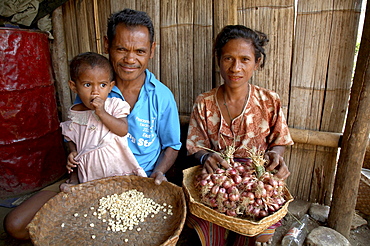
East timor. Husband and wife with maize seeds and onions which they will plant next year, oecussi-ambeno

Happy young family parents with two small kids gathering around brick fireplace in cozy and warm country house during Christmas holidays in winter. Father, mother ad children sitting by fire at home

Hot stones are filled into the body with tongs, traditional cooking of a goat with hot stones in its belly, Mongolian cooking method Boodog, Toew-Aimag, Mongolia, Asia
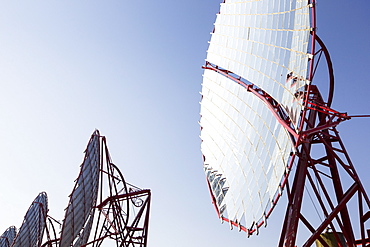
The Muni Seva Ashram in Goraj, near Vadodara, India, is a tranquil haven of humanitarian care. The Ashram is hugely sustainable, next year it will be completely carbon neutral. Its first solar panels were installed in 1984, long before climate change was on anyones agenda. Their energy is provided from solar panels, and wood grown on the estate. Waste food and animal manure is turned inot biogas to run the estates cars and also used for cooking. Solar cookers are also used, and the air conditioning for the hospital is solar run. 70 % of the food used is grown on the estate. They provide an orphanage, schools for all ages, vocational training, care for the elderly, a specialist cancer hospital withstate of the art machinary, and even have a solar crematorium. This shot shows solar panels that focus the suns rays on heat exchangers to boil oil, which is then sent down to the kitchens below to heat the cookers.
